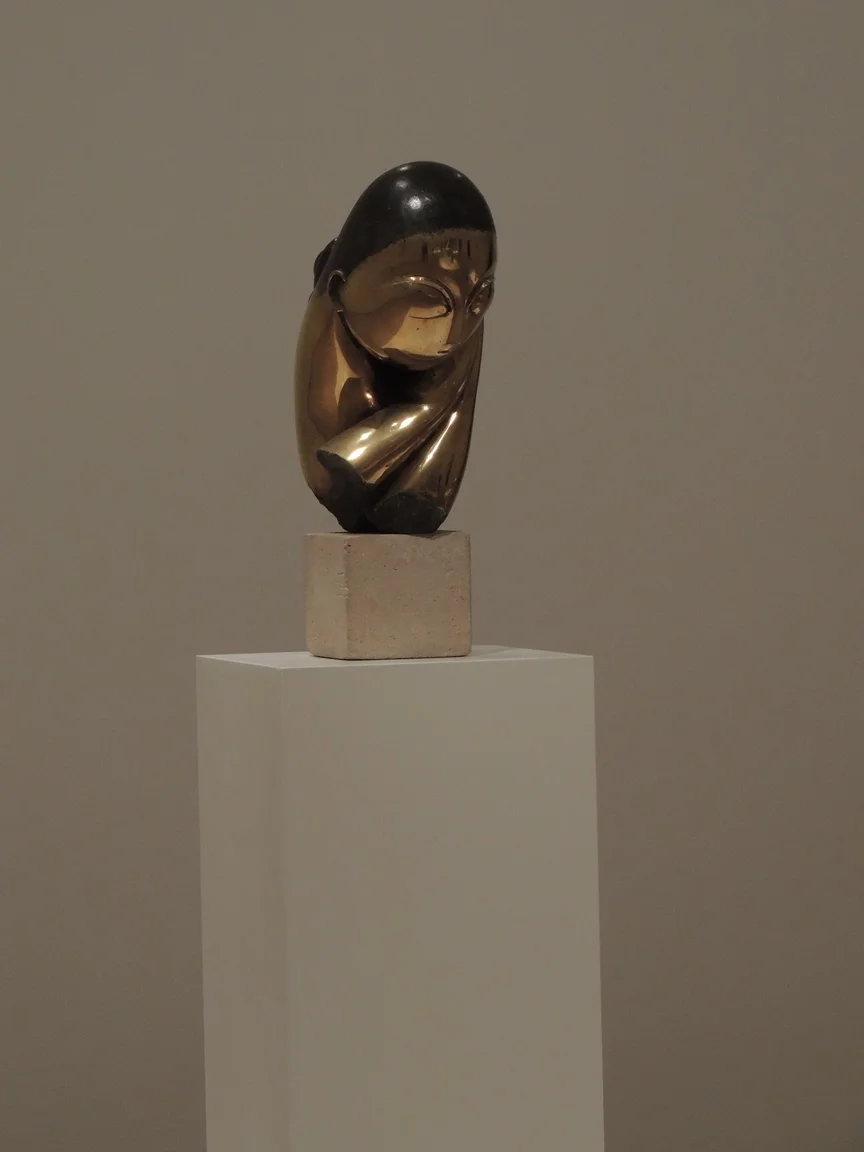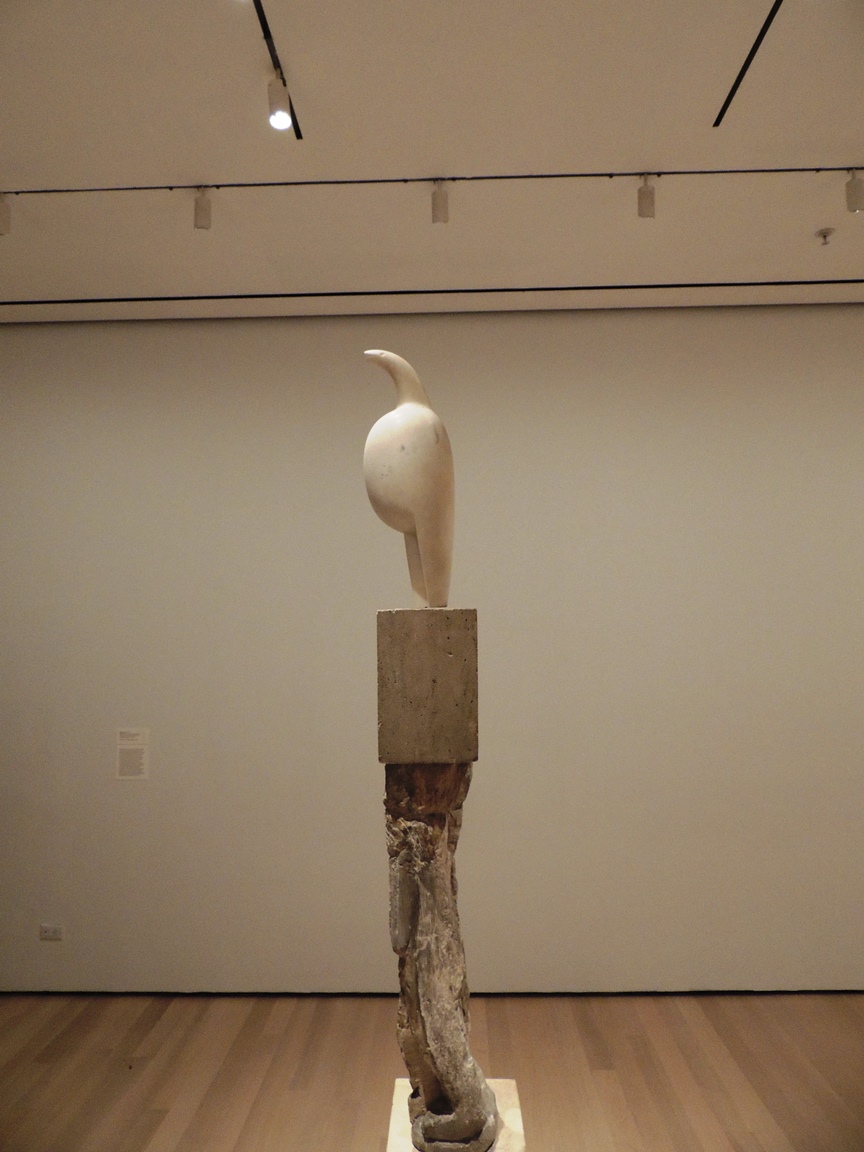Brancusi
Talin Kraft
French-Romanian sculptor Constantin Brâncuși is one of my favorite sculptors. He used to say, "What is real is not the external form, but the essence of things... it is impossible for anyone to express anything essentially real by imitating its exterior surface." I really like that approach. I also think it could be a definition of having talent – “the ability to capture the essence of things.”
Though I have to say this principle caused him a few problems - when he brought his “Bird in Space” to New York in 1926, custom officials tried to impose a 40% custom duties on it, as on industrially manufactured object. They refused to believe it was a (duty free) piece of art. This matter had to be resolved in court, where it was decided that it was, indeed, a piece of art, due to its uniqueness and being “pleasing to look at”. This was the first court decision that accepted that non-representational sculpture could be considered art.
Right now there’s a very nice exhibit of Brancusi works at MoMA. The exhibit is very small, all the works are from MoMA collection. So I’m using the opportunity to add more pictures from a few other museums where I saw his works. These pictures are grouped not by museum/exhibit, but rather by series.
One of his main themes was a development of an idea of a bird. He has a series of “Maiastra” sculptures – Maiastra is a magical Queen of birds in Romanian folklore, she has the ability to tell the future and to read secrets buried deep in the hearts of humans, and the one who hears her song can regain his youth. His first birds are very static, majestic and solemn creatures. Later on this image becomes a “Golden Bird”, a more abstract representation, still rather static, and then transforms into a “Bird in Space”, a series of 16 sculptures in bronze and marble, which are a pure abstraction, an idea of flight, of a streamlined movement.
Here’s another frequent motif - a new life. There are several sculptures in this series, “The First Cry”, “The Beginning of the World”, all of them are based on a very simple, primeval shape of an egg, which is highly symbolic - of life, resurrection, eternal life, of creation itself. On the other hand, simplicity of the shape suggests that there’s a lot of development ahead.
This simple egg-like shape appears again in portraits of “Mademoiselle Pogany”, an image that Brancusi developed for over 23 years, from representational to highly stylized to abstract. It also influenced other works, from “Danae” to “Sleeping Muse” to “Blond Negress”, even to“Princess X”, which is on the opposite end of a spectrum of feminine essence.
Brancusi sculpted not only birds, but other animals too, though he focused on those that fly or swim.
“A thing which would pretend to reproduce nature would only be a copy,” Brancusi said. “I am trying to get a spiritual effect.” Look at his “Fish” sculpture – the color and striation of the marble, the elongated shape, the highly polished finish – while it looks nothing like a real fish, it truly feels like one, darting through water.
More birds! Out of all the birds, “The Cock” was probably most important to Brancusi, who used to say “Le Coq c’est moi” (The Cock is me).
In “Leda”, Brancusi chose to transform Leda into a swan instead of Zeus, explaining: "I never could imagine a male being turned into a swan, impossible, but a woman, yes, quite easily." As with most of his sculptures, he made several versions of “Leda”, in bronze and marble. In one of the versions, Brancusi placed the polished bronze sculpture on a highly polished metal disk that served as a mirror. He had made this base revolve slowly, and the glowing swan appeared as though moving on water.
The penguins sculptures were inspired by the photos from the Antarctic expedition by the French explorer Jean-Baptiste Charcot. Brancusi was impressed by the vast whiteness, and the penguins' habit of clustering together.
And finally, a geometrical piece. Brancusi always paid special attention to the base of his sculptures, realizing a specific design for each piece, using simple or complex geometric forms. Eventually, he decided that one of his frequent designs, a double pyramid, is a complete sculptural work in its own right. The “Endless Column” here is an early version, whereas his latest column is a ninety-eight feet tall steel construction, placed on river bank in Romania as a commemoration for all the Romanian soldiers that died in World War I. It’s called “Endless Gratitude Column”. It does seem truly endless when you look up at it from below. Note an incomplete unit at the top – it represents the concept of the infinite.
























